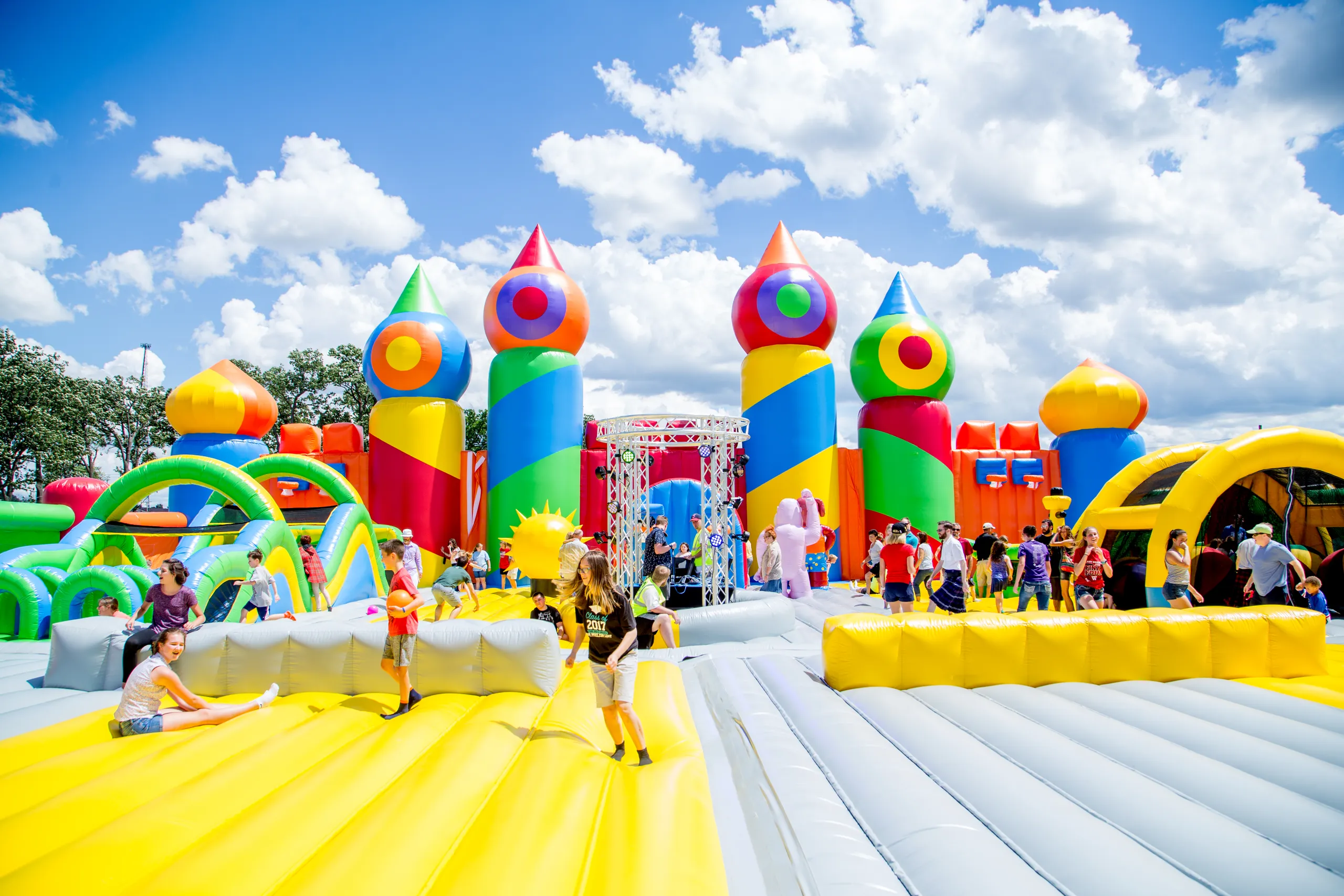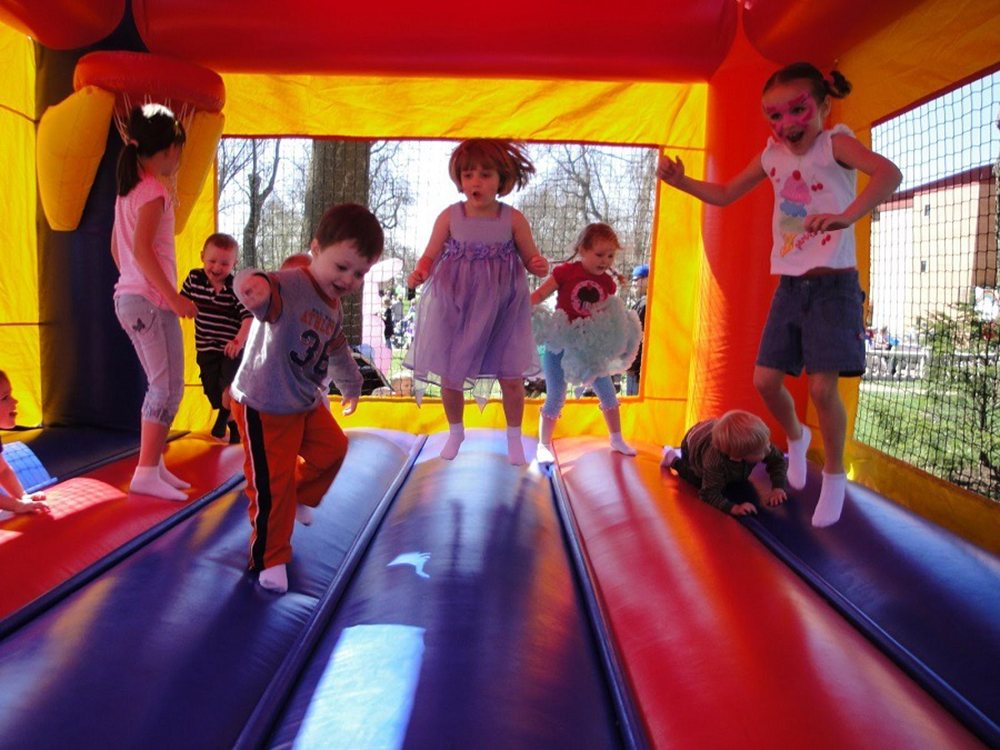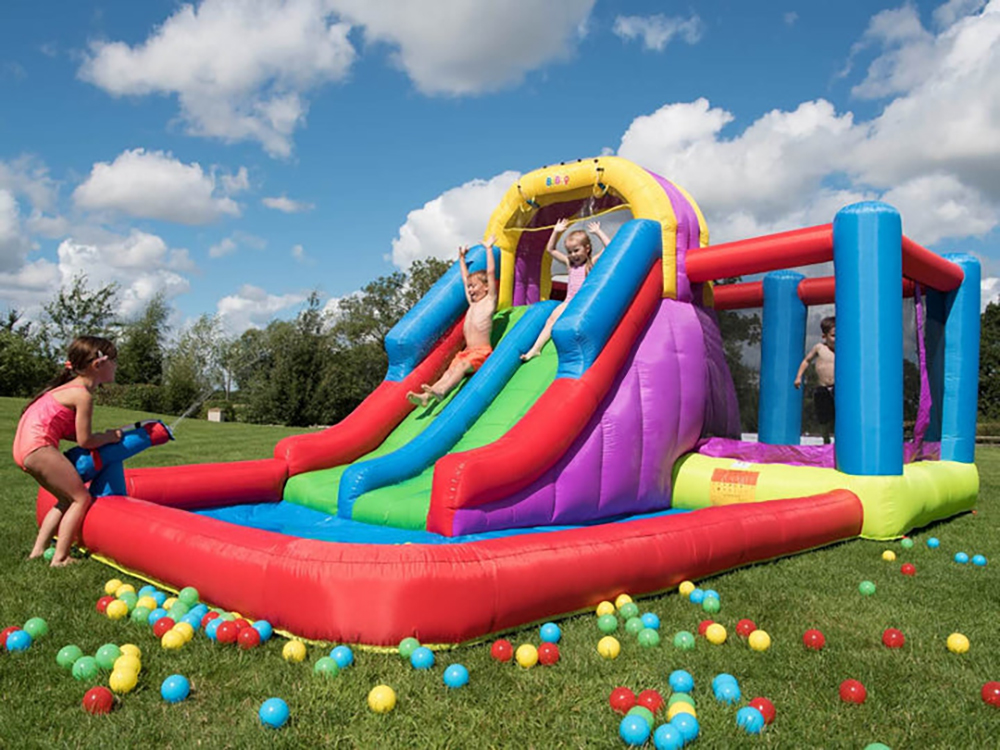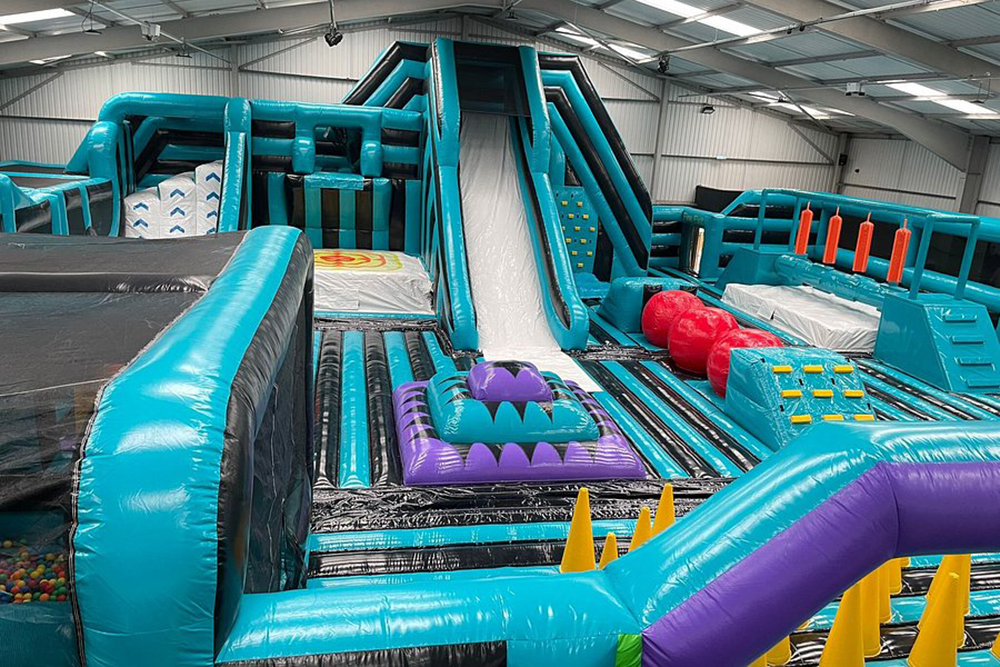
バウンスハウスに関する保護者向けの基本的な安全ガイドラインと規制
バウンスハウスの遊具は、子供たちにお祝いの場を楽しむ楽しい方法を提供しますが、子供たちの興奮は事故につながる可能性があります。したがって、そのような遊びの時間中は安全が最も重要です。

The straightforward response to this question is affirmative! Bouncy castles operate with the assistance of an electric blower that consistently infuses air into the inflatable structure, while any surplus air escapes through the seams. However, it’s important to note that there are two distinct categories of inflatables known as “sealed air units” and “continuous flow units.” We will elaborate on their distinctions below.
This applies to all types of bounce houses and, in fact, most inflatables designed for bouncing activities. The air pump is connected via an inflation tube located at the rear of your bounce house, ensuring a constant supply of air. When the pressure reaches the appropriate level, any surplus air is released through the stitching on your bounce house. This is precisely why it’s not possible for a bounce house to burst, even in hot weather conditions.
Sealed air inflatables are typically designed for purposes other than bouncing. This category encompasses items such as Nerf War walls, inflatable trampoline enclosures, and paintball barriers. To better grasp the concept of sealed air units, envision your own air mattress or pool float. You inflate it, either with a pump or manually, and then secure a plug to keep the air inside the inflatable. This method is effective for inflating objects but is not suitable for bouncy castles. Consider this: if you were to inflate your air mattress to high pressure, seal the valve, and then jump on it, what would likely occur? That’s right — it would probably burst. This is precisely why the sealed air system is not employed for inflatables meant for bouncing activities.
You might have come across reports about an “exploding bouncy castle” incident from some years ago. In truth, this was a case of misinformation by the media. It was, in fact, a trampoline equipped with a sealed air enclosure. The sealed air unit had lost pressure, prompting the operator to reconnect the pump for reinflation but was subsequently distracted. Eventually, the pressure within the sealed air system became so high that the inflatable enclosure ruptured, similar to the example of our air mattress.
This is an extremely frequent inquiry. If you’ve perused our previous explanation regarding the various types of inflatables, you’ve likely deduced the response. Many times, customers observe their castle inflating and inquire, “Is it okay to turn it off now?” Naturally, they can deactivate the fan at their discretion, but it’s essential to note that, because of the air seeping through the seams, the deflation process will occur rapidly!
For as long as you intend to have the children enjoying the bouncy castle, it must remain connected and operational. If you wish to have the children take a break for eating, singing happy birthday, or playing games, you can certainly turn off the bouncy castle. Our recommended approach for this would be to kindly ask the children to exit the castle, and repeat this request as needed. Typically, after 5 or 6 requests, only the most determined ones might remain, and in such cases, you may need to be a bit firmer in your request. We then suggest that one adult positions themselves at the front of the castle to prevent any children from climbing back on, while another adult goes to the rear and disconnects the power. When you’re ready for the castle to reinflate, simply reverse this process. Reconnect the power, but ensure that no children attempt to climb onto the inflatable until it has reached its full operational pressure, which typically takes 30-60 seconds depending on the size of your inflatable.
Once again, this is a question we frequently encounter, especially given the ongoing price hikes from energy providers. To provide an honest response, the cost depends on the number and size of the inflatables you’re operating. In the case of our standard-sized bouncy castles, we utilize blowers with a 1.5-horsepower rating. Roughly estimating, running a bouncy castle continuously for an 8-hour period will likely amount to approximately £1.50, contingent on your electricity tariff. In the grand scheme of things, this is a minimal expense for a full day of entertainment for numerous children! However, it’s worth noting that if you don’t have access to a household power outlet, the expenses would be considerably higher as you’d need to account for generator rental and the associated fuel costs. It’s important to mention that generator services are not something we provide.
There’s no need for concern regarding cords and extension cables if your inflatable is located within a 25-meter radius of a power outlet. As part of each rental, we provide a robust 25-meter power cable, which is rated IP44 for heavy-duty use. This cable features the familiar blue “camping-style” plug, designed to withstand splashes in case of rain showers. Additionally, all our cables undergo PATS testing every six months to ensure they remain suitable and safe for their intended use.
Fortunately, power interruptions are infrequent in the UK. However, if you happen to encounter a disruption in your power supply, your initial priority should be ensuring the swift and calm evacuation of anyone from the bouncy castle. A noteworthy safety feature of modern castles is their ability to sustain a minimum of 60% inflation for 60 seconds following a power outage, allowing ample time for the safe removal of individuals from the inflatable. In the event of a power cut, the castle won’t suddenly collapse onto those who are bouncing; it will retain a minimal level of inflation. Once everyone has exited the castle, it’s advisable to disconnect it until power is restored, and the cause of the outage is determined.
Here’s another question we frequently receive! The straightforward answer is yes, to a certain extent. A bouncy castle, especially one equipped with a built-in shower cover, can easily withstand light rain showers without any issues. Additionally, all our electrical components are waterproof, so there’s no cause for concern in that regard.
However, the practical consideration is this: if the forecast indicates a full day of continuous rain, it’s unlikely that children would prefer to spend their time outdoors on a bouncy castle. Moreover, we do recommend avoiding the use of bouncy castles during rain showers, as they can become slippery when wet. It’s typically a better choice to wait for the rain to subside, then towel dry the bouncing area before allowing the kids to resume their energetic play.

バウンスハウスの遊具は、子供たちにお祝いの場を楽しむ楽しい方法を提供しますが、子供たちの興奮は事故につながる可能性があります。したがって、そのような遊びの時間中は安全が最も重要です。

弾むお城やインフレータブルは、子供も大人も喜びと興奮の源です。ただし、楽しみの中でも、何よりも安全を優先することが重要です。この記事は、弾むお城やインフレータブルを安全に楽しく体験するための包括的なガイドとして機能します。

いつもの誕生日のお祝いから刺激的な変化を求めていますか?お子様とそのお友達に忘れられない体験を作ってみませんか?そうですね、もう探す必要はありません。陽気なホーム パーティーが答えです。弾むホームパーティーは、子どもたちが弾んだり、滑ったり、登ったりして楽しむことができる集まりです。これらのインフレータブルバウンスハウスはさまざまな形や寸法があり、屋外と屋内の両方のフェスティバルに最適です。
© 2023全著作権所有
❤ランチェンテック製